 What a difference a few weeks make in the garden. Those colder night-time temperatures are a thing of the past (fingers crossed) and we are all playing catch up with our gardening. So much work to do for all of us, and judging by the footfall at Pengelly over the last few weeks, you are not letting the grass grow under your feet, metaphorically or physically. Luckily, we have a new member of staff, Emma, who has just joined us from the Eden Project, where she managed the plant area. She brings a wealth of knowledge and experience in all aspects of plants and gardening, an area in which she has worked since she was a young whippersnapper. We are delighted she has joined the loony crew so come and meet her some time!
What a difference a few weeks make in the garden. Those colder night-time temperatures are a thing of the past (fingers crossed) and we are all playing catch up with our gardening. So much work to do for all of us, and judging by the footfall at Pengelly over the last few weeks, you are not letting the grass grow under your feet, metaphorically or physically. Luckily, we have a new member of staff, Emma, who has just joined us from the Eden Project, where she managed the plant area. She brings a wealth of knowledge and experience in all aspects of plants and gardening, an area in which she has worked since she was a young whippersnapper. We are delighted she has joined the loony crew so come and meet her some time!
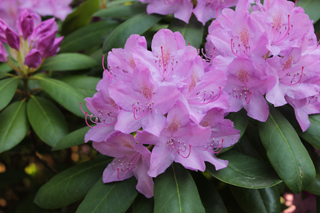 Now that temperatures have risen, and those bitter winter winds seem to have left us for the moment at least, it is time to take a hard look at your evergreen shrubs, and decide if they need a tidy up or reducing in size. There is a relatively short window in which to prune these. You need to catch them just before growth starts in mid-spring, after any risk of frost or cold wind has passed, but before the heat of summer really emerges. A mid-spring start date will avoid frost and wind damage to new shoots, and the inevitable cut ends will soon be disguised by new growth. Stopping before the heat builds up will mean that your shrubs do not end up drought stressed by the summer sun, and will not look too scraggy as the bulk of its new growing will have been done for the year.
Now that temperatures have risen, and those bitter winter winds seem to have left us for the moment at least, it is time to take a hard look at your evergreen shrubs, and decide if they need a tidy up or reducing in size. There is a relatively short window in which to prune these. You need to catch them just before growth starts in mid-spring, after any risk of frost or cold wind has passed, but before the heat of summer really emerges. A mid-spring start date will avoid frost and wind damage to new shoots, and the inevitable cut ends will soon be disguised by new growth. Stopping before the heat builds up will mean that your shrubs do not end up drought stressed by the summer sun, and will not look too scraggy as the bulk of its new growing will have been done for the year.
 You should leave any evergreens that are in flower or about to flower in mid-spring until that flowering has finished. Shrubs such as rhodis, azaleas and camellias often thrive better without any pruning at all, unless they become too unwieldy for their positions. If you do need to prune to control their size, leave until after flowering again, but in the case of camellias particularly, you need to act quickly when the window opens. These start forming their next year’s flower buds very soon after flowering, and if you leave pruning too late, you risk losing the following year’s blooms.
You should leave any evergreens that are in flower or about to flower in mid-spring until that flowering has finished. Shrubs such as rhodis, azaleas and camellias often thrive better without any pruning at all, unless they become too unwieldy for their positions. If you do need to prune to control their size, leave until after flowering again, but in the case of camellias particularly, you need to act quickly when the window opens. These start forming their next year’s flower buds very soon after flowering, and if you leave pruning too late, you risk losing the following year’s blooms.
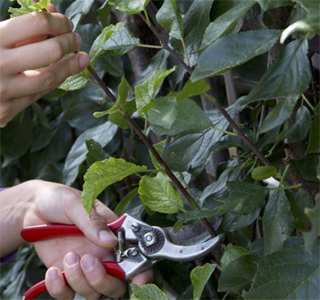 There are some golden rules with pruning. First, make sure your pruning implements, whether they be secateurs or loppers, are sharp and clean. Ragged cuts and dirty tools make for fertile ground for disease to enter your plant. Secondly, remove the 3 D’s – dead, diseased and damaged material. That alone will make a difference and that may be all you need to do. If not, move on to number 3, which is trim and shape, always cutting back to just above a leaf bud, cutting on the diagonal. It is very tempting and easy to turn everything into a blobby mound, but keep taking steps back from your shrub and get the shape you want to see. Fourthly, if your shrub needs rejuvenation rather than just a trim, try to do this over 3 years, to avoid too much stress to the shrub. And finally, when you’re happy with the end result, give it a good feed with either a slow release granules or a seaweed-based liquid feed, and a good mulch, both applied around the base.
There are some golden rules with pruning. First, make sure your pruning implements, whether they be secateurs or loppers, are sharp and clean. Ragged cuts and dirty tools make for fertile ground for disease to enter your plant. Secondly, remove the 3 D’s – dead, diseased and damaged material. That alone will make a difference and that may be all you need to do. If not, move on to number 3, which is trim and shape, always cutting back to just above a leaf bud, cutting on the diagonal. It is very tempting and easy to turn everything into a blobby mound, but keep taking steps back from your shrub and get the shape you want to see. Fourthly, if your shrub needs rejuvenation rather than just a trim, try to do this over 3 years, to avoid too much stress to the shrub. And finally, when you’re happy with the end result, give it a good feed with either a slow release granules or a seaweed-based liquid feed, and a good mulch, both applied around the base.
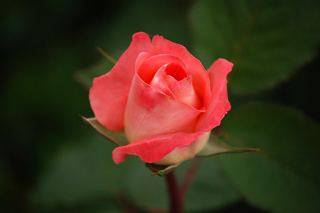 As June heaves into view, there is no more iconic plant for this time of year than the rose. The earliest varieties are starting to put out flowers, and with their glorious scent and range of colour and shape, you would be hard pressed to find anyone who says they don’t like them. In fact, if they do, they are probably fibbing.
As June heaves into view, there is no more iconic plant for this time of year than the rose. The earliest varieties are starting to put out flowers, and with their glorious scent and range of colour and shape, you would be hard pressed to find anyone who says they don’t like them. In fact, if they do, they are probably fibbing.
Anyway, there is some conflicting information out there about planting roses, so here is some advice you might like to think about if you are going to plant one.
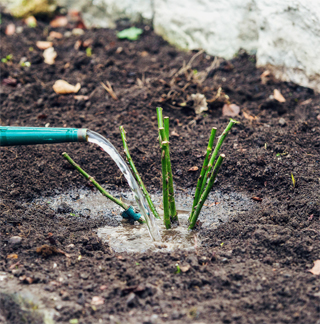 There are those who advise that you can’t plant a rose where one has been before. From our research, there is no direct evidence of replant disease, as it is known, but clearly, some people have experienced that replacement roses have not thrived when planted in the same spot. If you think about it, roses often live in the same place for years, and naturally, as heavy feeders, they will deplete the nutrients and water table around their root system. Roses rely heavily on tiny feeder roots running off their chunkier roots, and these work hard. This is why we need to feed them regularly even when they are established.
There are those who advise that you can’t plant a rose where one has been before. From our research, there is no direct evidence of replant disease, as it is known, but clearly, some people have experienced that replacement roses have not thrived when planted in the same spot. If you think about it, roses often live in the same place for years, and naturally, as heavy feeders, they will deplete the nutrients and water table around their root system. Roses rely heavily on tiny feeder roots running off their chunkier roots, and these work hard. This is why we need to feed them regularly even when they are established.
 There are some common sense actions you can take to mitigate this if you want to plant a rose in the same place, and actually these can apply to planting anything where something large and well-established has been removed. The first is to dig out a goodly area of soil, and replace it with nutritious organic material, preferably your own compost if you have it, well-rotted manure, or a John Innes-based No 2 or 3 compost with a high soil content. Puddle the hole well (pour in a can full and walk away for 10 minutes), and then mix some myccorhizal fungi or bonemeal into the soil in the planting hole to aid root development. Once you have planted your rose (nice and deep to cover the graft point), backfill the hole with more enriched compost and water in thoroughly until established.
There are some common sense actions you can take to mitigate this if you want to plant a rose in the same place, and actually these can apply to planting anything where something large and well-established has been removed. The first is to dig out a goodly area of soil, and replace it with nutritious organic material, preferably your own compost if you have it, well-rotted manure, or a John Innes-based No 2 or 3 compost with a high soil content. Puddle the hole well (pour in a can full and walk away for 10 minutes), and then mix some myccorhizal fungi or bonemeal into the soil in the planting hole to aid root development. Once you have planted your rose (nice and deep to cover the graft point), backfill the hole with more enriched compost and water in thoroughly until established.
As we said, there is disagreement out there about whether this will succeed, but our view is that, if you give your rose, and indeed, any plant, the best of environments to grow in, you can be satisfied that you have given it the best start you can. After that, Mother Nature will take over and make the decision for you.
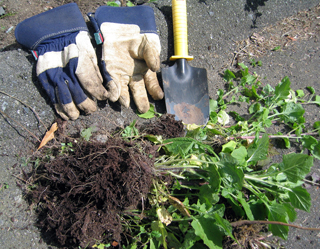 Last month we mentioned trying to keep up with your weed growth. Ha ha, we hear you cry! You can actually see them growing before your eyes at the moment. Weeding little and often really does help, but if they are just getting on top of you, there are a number of herbicides available now that confirm to organic standards, satisfying your environmental conscience. These will certainly help with the annual weeds, but the perennials may take a bit more persuasion to leave. Then, it’s the trusty spade or fork, or something a little stronger in the chemical department, probably glyphosate-based. The reality of living in a rural setting, as most of us do, is that weeds will always be a part of our gardens, and there are some which actually are beneficial to wildlife and quite attractive to have lurking around the fringes. Find the balance which suits you best.
Last month we mentioned trying to keep up with your weed growth. Ha ha, we hear you cry! You can actually see them growing before your eyes at the moment. Weeding little and often really does help, but if they are just getting on top of you, there are a number of herbicides available now that confirm to organic standards, satisfying your environmental conscience. These will certainly help with the annual weeds, but the perennials may take a bit more persuasion to leave. Then, it’s the trusty spade or fork, or something a little stronger in the chemical department, probably glyphosate-based. The reality of living in a rural setting, as most of us do, is that weeds will always be a part of our gardens, and there are some which actually are beneficial to wildlife and quite attractive to have lurking around the fringes. Find the balance which suits you best.
Anyway, there comes a time in every gardening column writer’s life when they put aside their modesty and show off a bit (Helen speaking here – Sarah would never show off).
 See my viburnum opulus roseum in this picture – if you have the space, every garden should have one, otherwise known as a Snowball tree. Great for cutting – no scent unfortunately, but covered in flower. And on that egotistical note, we hope by the time you read this, you are freshly inspired by the Chelsea Flower Show, have suitably indulged your Monty Don crush (join the queue) and are raring to get out there and garden. See you in our shorts next time.
See my viburnum opulus roseum in this picture – if you have the space, every garden should have one, otherwise known as a Snowball tree. Great for cutting – no scent unfortunately, but covered in flower. And on that egotistical note, we hope by the time you read this, you are freshly inspired by the Chelsea Flower Show, have suitably indulged your Monty Don crush (join the queue) and are raring to get out there and garden. See you in our shorts next time.
Sarah Daniel and Helen Robins, Pengelly Garden centre

